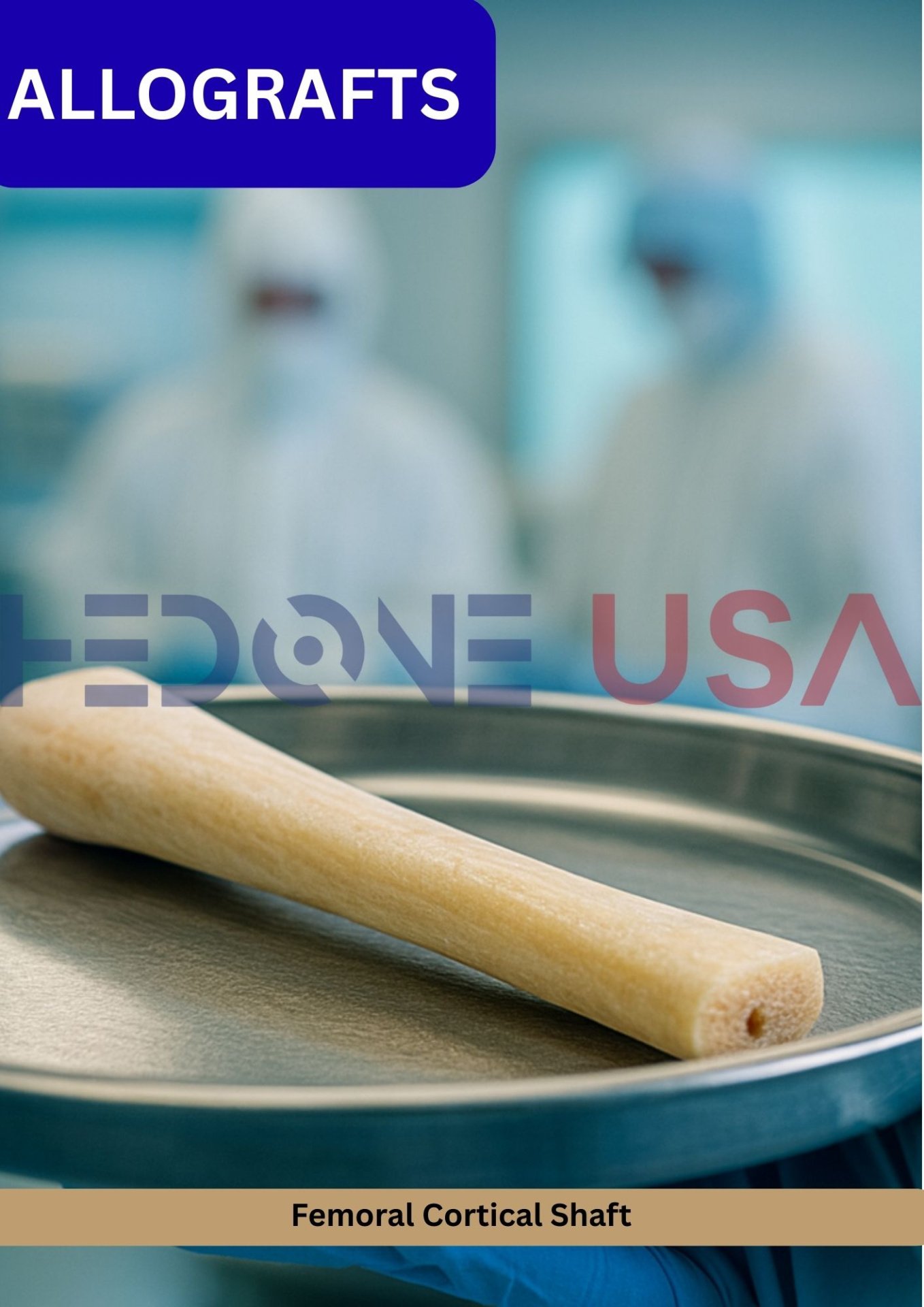The Femoral Cortical Shaft is a long-bone allograft harvested from human femur. This advanced platform ensures deep cleaning, viral inactivation (SAL 10⁻⁶), and terminal sterilization while preserving the structural and biological properties of the graft.
Due to its dense cortical structure, the femoral shaft provides high mechanical strength essential for load-bearing reconstructions, while its osteoconductive surface supports cellular attachment and new bone formation. These grafts are widely used in oncology, orthopedic trauma, and revision surgeries requiring robust cortical segments.
Composition: Dense cortical femoral bone graft.
Biological Properties:
Osteoconductive: Provides a cortical scaffold for vascular and bone ingrowth.
Osteoinductive: Retains bone morphogenetic proteins (BMPs) to stimulate osteogenesis.
Biocompatible: Remodels gradually into host skeletal system.
Oncology: Segmental bone replacement following tumor resections.
Orthopedic Trauma: Limb salvage, major defect reconstructions, and non-union repair.
Spinal Surgery: Used as strut grafts in spinal fusions requiring cortical strength.
Revision Arthroplasty: Filling bone loss in hip and knee revisions.
Standard femoral shaft lengths: 80 mm, 100 mm, 120 mm
Custom-cut cortical segments available upon request
